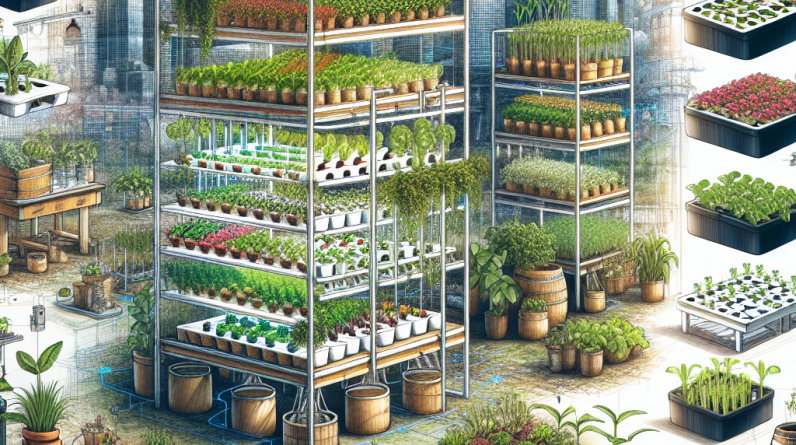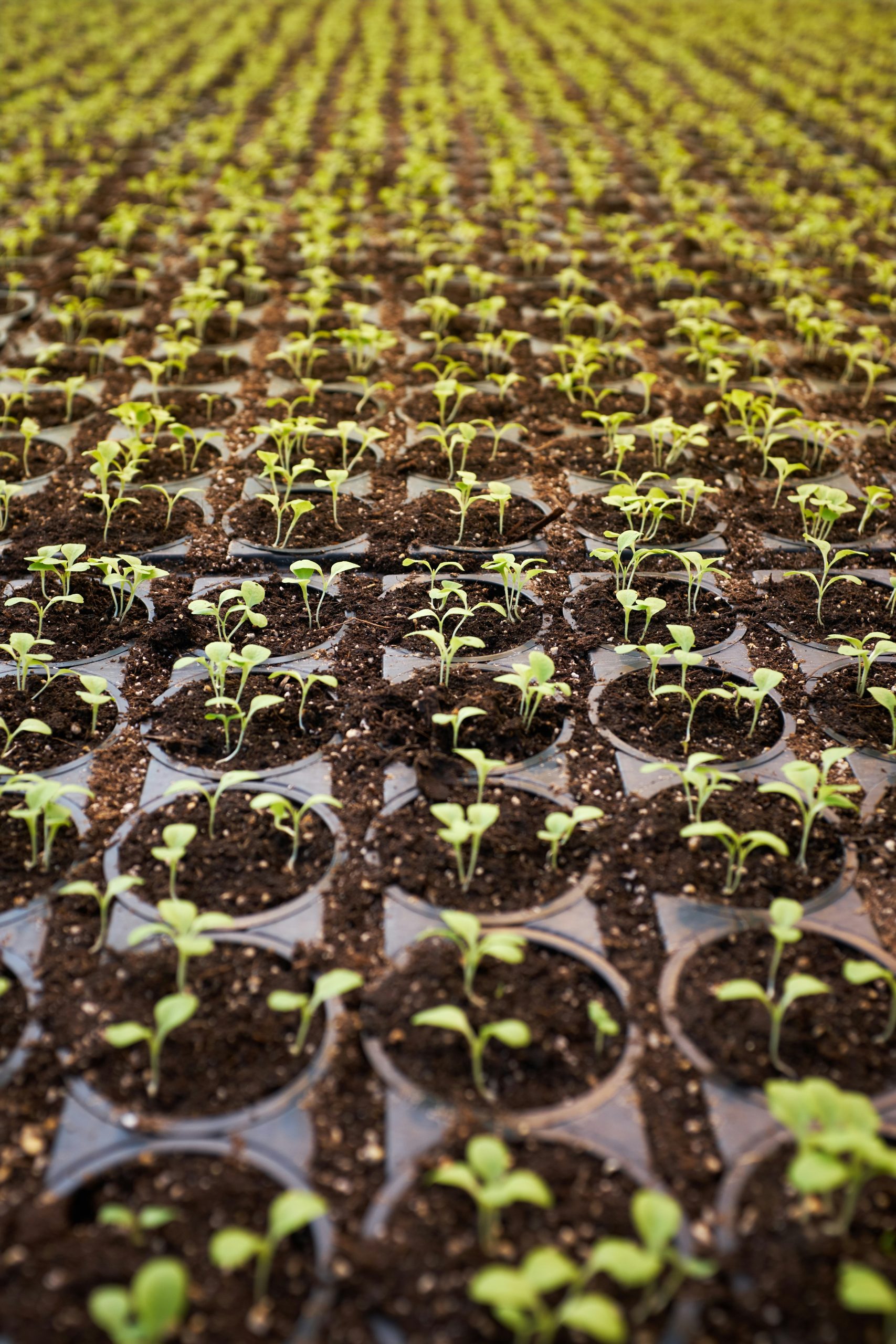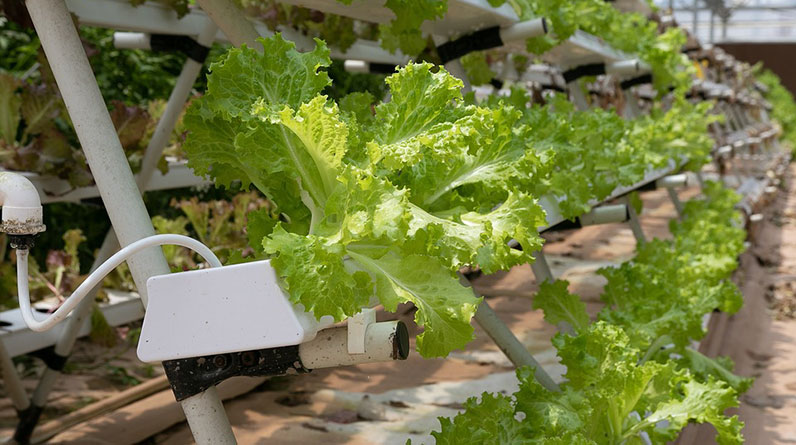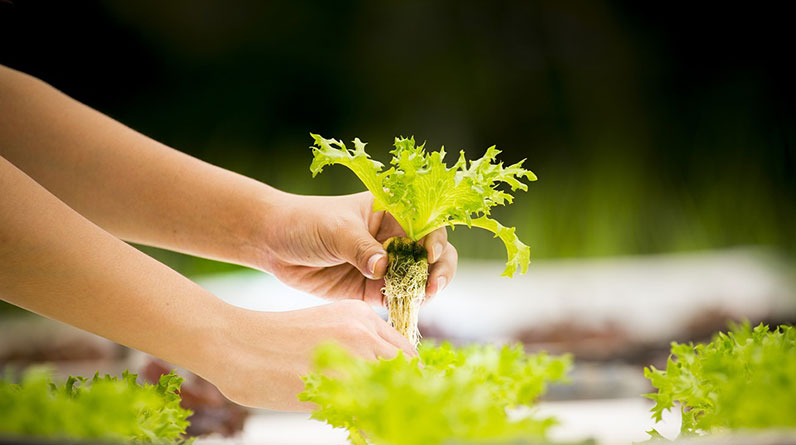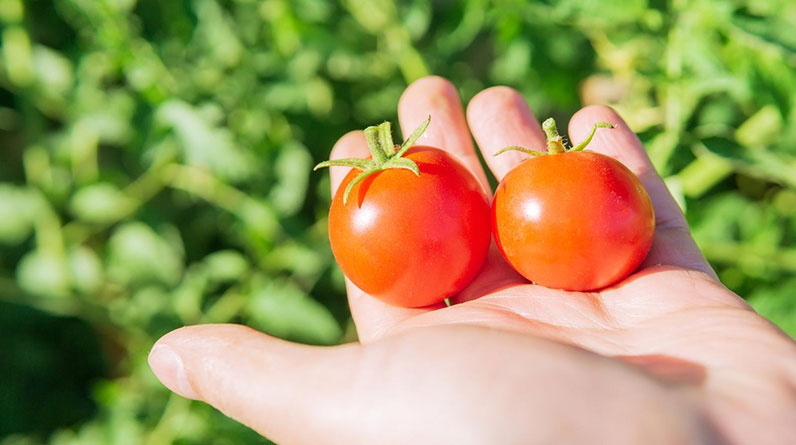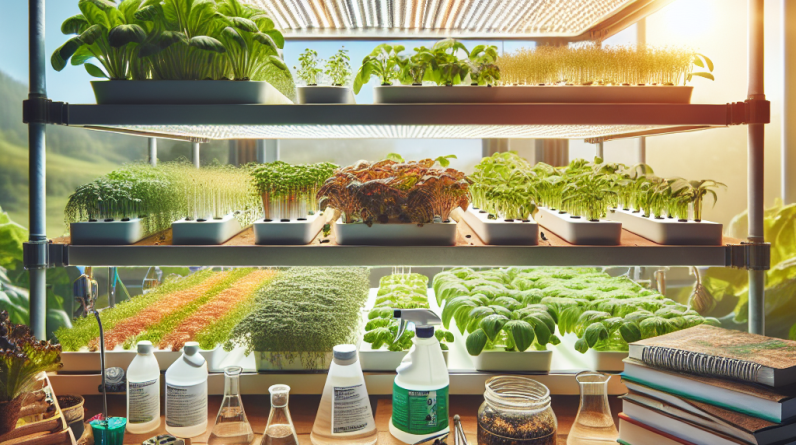
Understanding Hydroponics
What is Hydroponics?
So let’s kick things off by defining hydroponics. It’s essentially growing plants without soil, using nutrient-rich water instead. Crazy, right? This method allows for a more controlled environment and promotes faster plant growth. The beauty of hydroponics is that you can grow a variety of plants, from lettuce to tomatoes, all in your own home or backyard!
I remember the first time I saw a hydroponic system in action; it was like a mini garden oasis. No dirt, no mess, just clean growing. I was hooked immediately. Being able to grow food with water and nutrients felt revolutionary, and I knew I had to dive in and learn more.
Choosing to go hydroponic means embracing a new way of agriculture. It’s not just about growing plants—it’s about sustainability and efficiency. For me, hydroponics combines my love for nature with my passion for innovation!
The Benefits of Hydroponic Farming
Now, let’s talk about why you should consider hydroponic farming. One of the main benefits is space efficiency. You can grow more in a smaller area compared to traditional farming. This means if you’re living in an urban environment, you’ve got options!
Another major upside? Water conservation. Hydroponics uses significantly less water than soil-based growing. This factor is huge, especially in areas where water may be scarce. I’ve seen my hydroponic setup use only a fraction of what a traditional garden would need!
Lastly, there’s the aspect of reduced pests and diseases. Since everything is so controlled, the risk of harmful pests invading your plants decreases. Gardening becomes a lot less of a struggle when you’re not constantly battling bugs.
Types of Hydroponic Systems
When getting started, it’s vital to know that there are different types of hydroponic systems. The most common types include nutrient film technique (NFT), deep water culture (DWC), and aeroponics. Each has its pros and cons.
I personally love deep water culture because the plants sit in a nutrient solution, allowing their roots to soak up all those vitamins. It’s pretty straightforward and a great starting point for beginners.
Choosing the right system for you depends on your space, what you want to grow, and how much time you can put into it. Do your research, and you’ll find the right fit!
Setting Up Your Hydroponic System
Select the Right Location
One of the first steps in my hydroponic adventure was choosing the right location. Think about things like light exposure, access to water, and temperature. Most plants love a good amount of natural sunlight, but if you’re working indoors, invest in some grow lights.
Also consider the room’s temperature and humidity. I’ve found that a well-ventilated area keeps my plants happy. It’s cool to see how the right conditions can lead to thriving greens!
Ultimately, finding a suitable location is going to set the tone for how well your plants grow, so take the time to scout it out. Trust me; it’s worth it!
Gathering Your Supplies
Alright, now that you’ve picked the perfect spot, it’s time to gather your supplies. Depending on your chosen system, you’ll need different items, but generally, you’re looking at a reservoir, a pump, growing medium, and of course, seeds.
I remember the thrill of shopping for my first hydroponic setup. I was like a kid in a candy store. Make sure to choose quality supplies to ensure the best start for your plants.
Don’t forget about nutrients! Hydroponic plants rely completely on the solutions you provide, so find a good nutrient mix specifically designed for what you’re growing. It’s like gourmet food for your plants!
Starting Your Seeds
Now comes the fun part—planting your seeds! Depending on your preference, you might start them in growing trays or directly in your hydroponic system. I started with less than 10 seeds in a basic growing tray, and man, was I excited to see them sprout!
Be patient during this stage, as germination can take anywhere from a few days to a couple of weeks, depending on the type of plants you choose. Keep an eye on water levels and make sure your nutrients are on point.
Once you start seeing those little green shoots, all that waiting will feel worth it! There’s something magical about watching life grow right in front of you.
Maintaining Your Hydroponic Garden
Monitoring Nutrient Levels
The success of your hydroponic farm will heavily depend on maintaining the right nutrient levels in your solution. It’s crucial to regularly check the pH and nutrient concentration to ensure your plants get exactly what they need.
I learned this the hard way when I neglected my nutrient solution, and a few of my plants started to wilt. Now, I’ve got a schedule to test my nutrient levels every week to keep everything in shape!
Invest in a quality pH meter and EC meter. These tools will be your best friends as you grow and manage your plants. It may sound nerdy, but trust me, you’ll want to track those levels!
Watering and Aeration
Another key part of maintenance is ensuring your plants are getting the right amount of water and oxygen. In hydroponics, the roots need to be aerated to thrive. If they stay submerged for too long without proper oxygen access, they could rot!
This is where a good pump comes in handy. My pump ensures that the water circulates properly, giving my plants plenty of oxygen. I’m amazed by how this simple act can make all the difference.
As a general rule of thumb, if you notice your plants drooping or yellowing, check your water and aeration setup. Something might be off, and it’s usually an easy fix!
Pest and Disease Management
Just because you’re not using soil doesn’t mean you’re completely free of pests and diseases. I’ve encountered some little critters before, but most hydroponic farms are less prone to pests. Still, I keep an eye out for any changes in my plants’ health!
There are many organic solutions to tackle pests, like neem oil or insecticidal soap, that work great! The key is to act quickly if you notice a problem, or else it could spread.
Also, keep your gardening space clean and tidy. I like to sterilize my tools every now and then to prevent any unwanted surprises. A little prevention goes a long way!
Harvesting Your Crops
Knowing When to Harvest
There’s nothing more rewarding than harvesting your own crops after all that care and attention! Each plant has its ideal time for harvest, so do your research and check for signs of maturity. Watching your plants grow has been an absolute trip.
For leafy greens, I usually harvest when they’re about 6-8 inches tall. With tomatoes, you’ll want to wait until they’re fully colored and slightly soft. It’s best to pick at peak ripeness for the best taste!
Learning the signs of maturity has been a game-changer for me—there’s nothing quite like enjoying a salad made from my very own hydroponic greens.
Proper Harvesting Techniques
When it finally comes time to harvest, there are a few techniques to keep in mind to maximize growth for your next cycle. For most leafy greens, I simply cut them right above the base to encourage new growth. It’s super satisfying!
If you’re harvesting plants like tomatoes, gently twist and pull them off to avoid damaging the plant. Treat your plants with love, and they’ll reward you with more crops in the future!
Also, remember to sanitize your tools before and after harvesting to avoid any potential contamination. It’s always good practice, and my plants appreciate it!
Enjoying the Fruits of Your Labor
After all that hard work, it’s time to enjoy the delicious produce you’ve grown! I love experimenting in the kitchen with my freshly harvested veggies. Nothing beats a salad made from your own farm-fresh ingredients.
Sharing my produce with friends and family has also been a massive joy. It’s a great feeling to educate others about hydroponics while passing along this healthy, homegrown goodness.
As you harvest, take notes on what worked and what didn’t. It’ll help you grow even better crops next time around!
Conclusion
Getting started with hydroponics might seem daunting, but believe me, it’s one of the most rewarding endeavors I’ve taken on. Once you nail down the basics, you’ll find the process to be fun, fulfilling, and uniquely satisfying. So why not dive in and start your hydroponic adventure today?
FAQ
1. Do I need a lot of space to start hydroponics?
Not at all! Hydroponics can be done in small spaces like balconies, basements, or even indoors with the right setup.
2. How often should I change the water in my hydroponic system?
It’s best to change the water every 1-2 weeks, or whenever it starts to look a bit murky.
3. Can I use regular seeds for hydroponics?
Yes, regular seeds will work! Just make sure they are suitable for hydroponic growing, and follow the guidelines for your specific system.
4. What kind of nutrients do I need for hydroponics?
You will need a specific hydroponic nutrient mix. Make sure it matches the type of plants you’re growing for the best results!
5. Is hydroponic farming expensive to start?
Initial costs can vary, but starting simple can minimize expenses. As you grow more comfortable, you can invest in more advanced systems.



